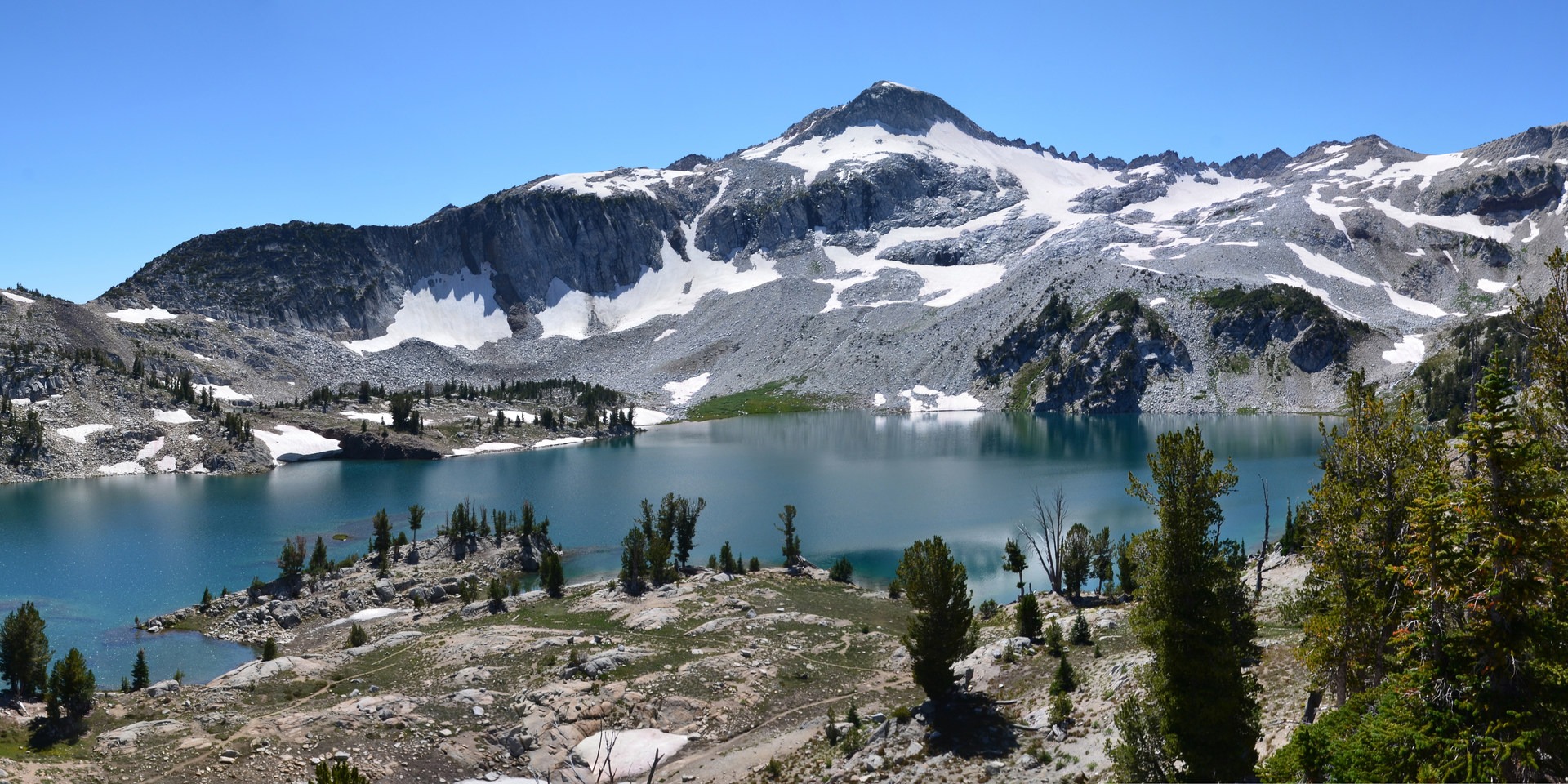You are here
Pets allowed
Allowed
Elevation Gain
4,000.00 ft (1,219.20 m)
Trail type
There-and-back
Distance
27.00 mi (43.45 km)
Please respect the outdoors by practicing Leave No Trace. Learn more about how to apply the principles of Leave No Trace on your next outdoor adventure here.




























Comments
I spent 2 1/2 days in the Eagle Cap Wilderness. The first day, I took the 1820 trail down to six mile meadow and up the 1810 trail to Douglas Lake. There are a couple great camp site at six mile if you want to camp for the night. This is also a great place to filter some water. When you get to the river crossing, if you head north on the river about 50m, there are some logs that will help you cross. Shortly after, there is a second crossing. It looks like there once was a small wooden bridge crossing the water again just down the trail that is in disrepair. There is another set of logs that you can take across the water to join up with the trail again, or you can easily ford this part of the river. The 1810 has some relatively easy switchbacks up to the lakes basin, but if you want a rest, there are beautiful panoramic views just a short way up the trail. The 1810 also has a powerful waterfall just off trail. Horseshoe lake is the first lake you'll come to. It is the most popular lake in this basin. It has perhaps the best brook trout fishing in the basin lakes. There are plenty of spots to camp between any of the basin lakes. Between Horseshoe lake and Lee lake, a couple rangers had a sweet camping spot near a waterfall, and there horses relaxed in a quiet grassy field. A deer came in to camp that had apparently been fed before. It shouldn't have to be said, but don't feed the wildlife. The second day, we hiked from the 1810A along Moccasin Lake, one of the most beautiful lakes in the basin, and on through the 1806 through Glacier pass. We crossed a shallow section through the lake that looks like you could hop across some rocks when the water is low. It was high when we were there, so we just waded through. When you continue the trail around the southwest end of Mocassin lake and begin to ascend again, there is a cairn line that directs the path. Just check to make sure your direction makes sense with the direction of the path on the map. You will come back down into a pretty grassy lea before cutting up a rather steep section of trail. Once you begin the ascent past the grassy lea, there is a rogue cairn that may send you too far east. You want to go pretty much straight south to a small stand of trees, where the path ascends again. We often used the hoof prints and horse dung left by the ranger's horses as a trail guide. It's not hard to stay on trail because it is kept up well, but you just need to be mindful you're going the right way in the flat granite areas. There is still snow through glacier pass, but it's honestly not bad. There was a cascading stream that we used as a reference that lead us to the beginning of the pass. I'm not sure if it's seasonal or not because I don't see an established waterway on my map. I definitely don't think it was steam from Pocket lake. Do be aware that this stream can be formidable, and there are large sections that where the stream completely under large swathes of snow. It would be a shame if someone saw this nice smooth snow path heading straight up to the pass, only to punch through the snow and down the stream. This stream will be very easy to cross further up when the trail deliberately crosses it. People kept saying it was snowed out and impassible, but my group and another group had little trouble. The pain was, it was clear that several people who didn't know the path tried to trail blaze in the wrong direction, which threw off the groups that followed, leading up a steep unnecessary section of the pass. If you do come up too high and left of the pass, it's not a big deal, but you will be working harder than you need. You will see the correct trail below you if you're too high. I wouldn't recommend hiking down to the trail though, because then you'll just have to trek it back up the snow. We just stayed high in the rock and followed the contour line to the rim of the pass where it looks down at Glacier lake. Through the pass, you'll have spectacular views. We filtered more water at Glacier lake and caught some more fish before continuing the 1806 toward Frazier. This section of trail trough the valley is one of the most beautiful sections of the trip. There are waterfalls cascading along the high cliffs, wildflowers everywhere, butterflies, rock chuck, and weasels in the rocks. The 1806 joins back up with the 1820 before Frazier. We didn't spend much time at Frazier because it looked the most lack-luster of all the lakes and was blown out with mosquitos. Not too far past Frazier, you have to cross the river again. This crossing was the most involved crossing our group had during the trip. There is a cairn marking a crossing along some rocks, but the rocks were totally blown out with rushing water. We just went down stream a bit and forced a crossing in the calmest spot we could. It wasn't hard, but we were wet to our nuts in relatively fast flowing water. We then had to cut through more wildflowers back to the trail. Along the cliff side, there are pretty cool ice caves formed from snow melted out by the water washing down the granite faces. It should be noted, our group did not find any suitable camping spots between the river crossing until six mile meadow again. We hiked 13 miles our first day, 11 miles our second day, and 7 miles on our last half day. Our last camp at six mile, we did have a black bear come towards our camp, but it was timid and only wanted water right there at the Wallowa river. We were about to find a tree to string our food bags up in when he wandered by. With a little yelling and stick banging, he made his way away from camp.
Sign In and share them.